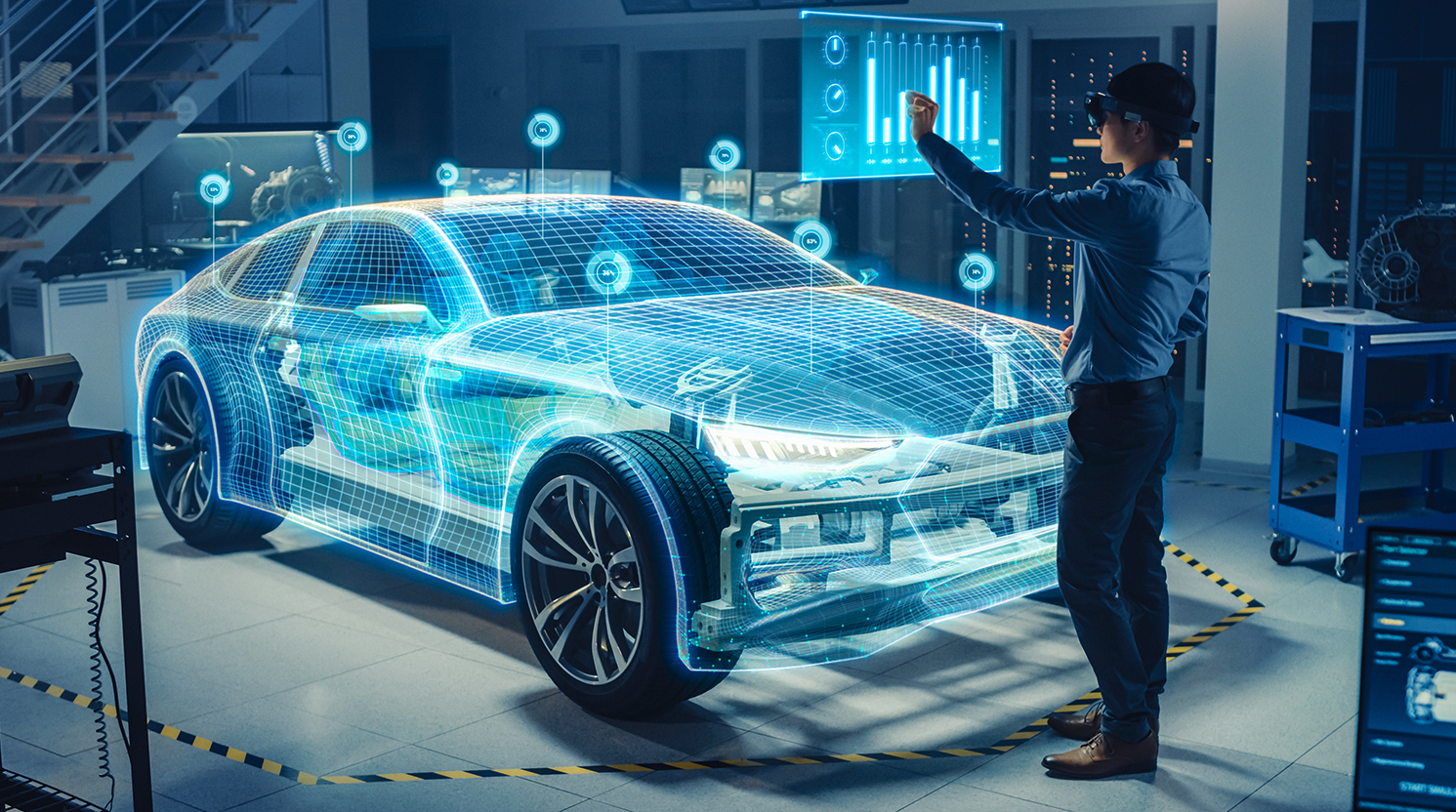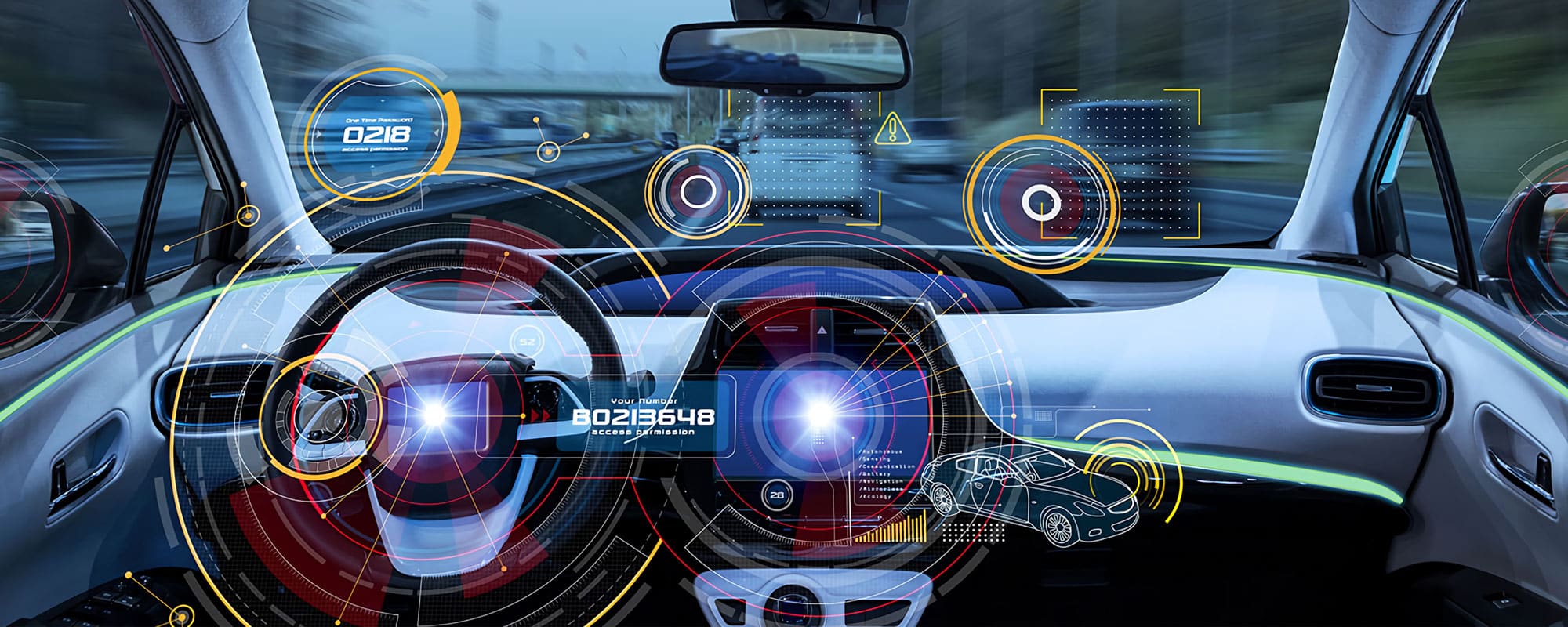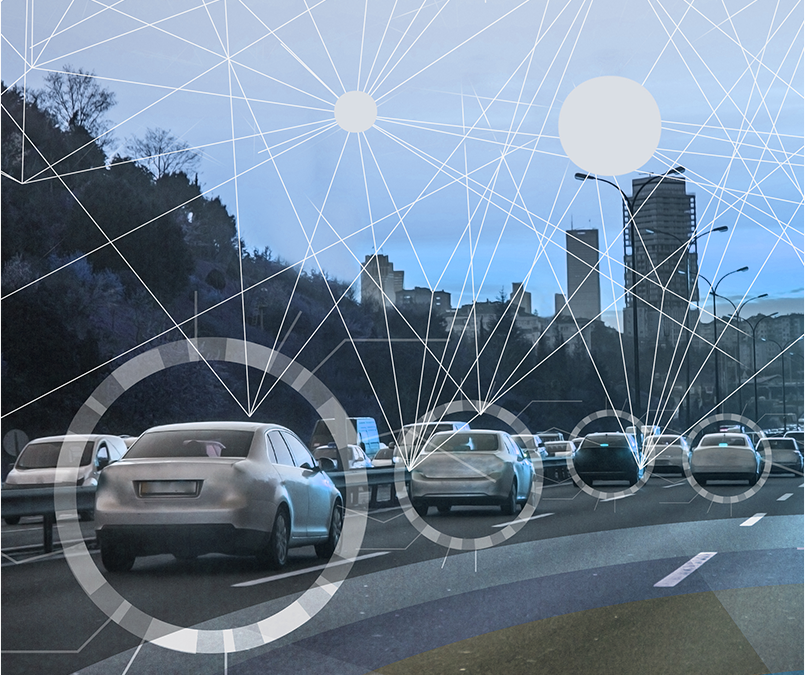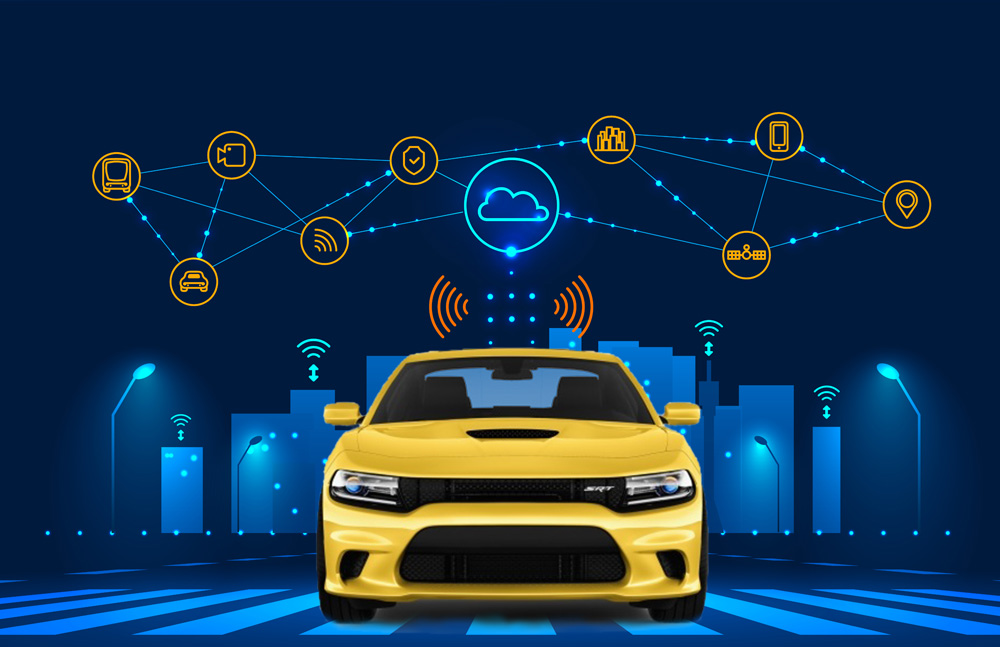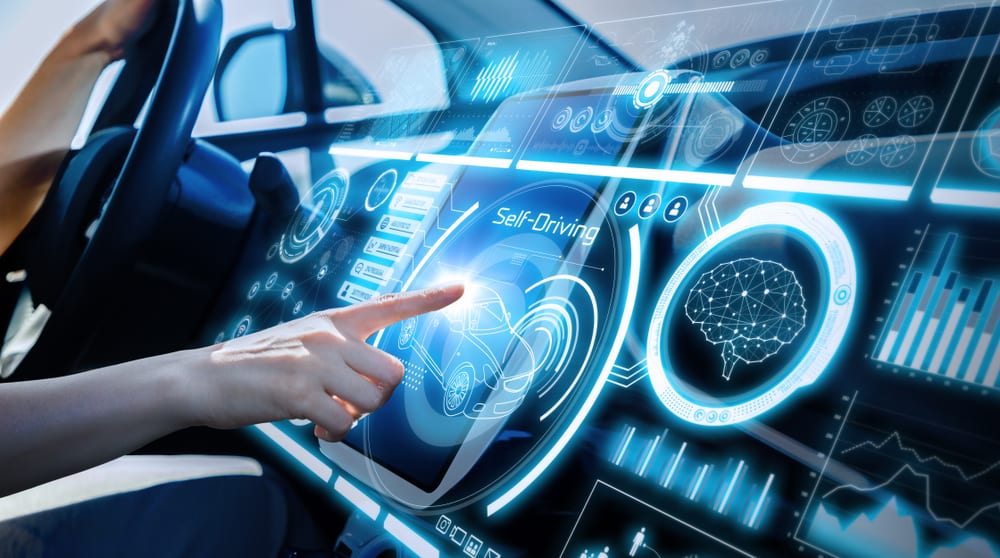Connected Cars - Transforming The Future Of Transportation
One such transformative development is the advent of connected cars. These vehicles, equipped with advanced communication and computing capabilities, are reshaping the way we drive, interact with our vehicles, and even think about transportation as a whole.
Author:Daniel BarrettDec 06, 202325.5K Shares689.5K Views
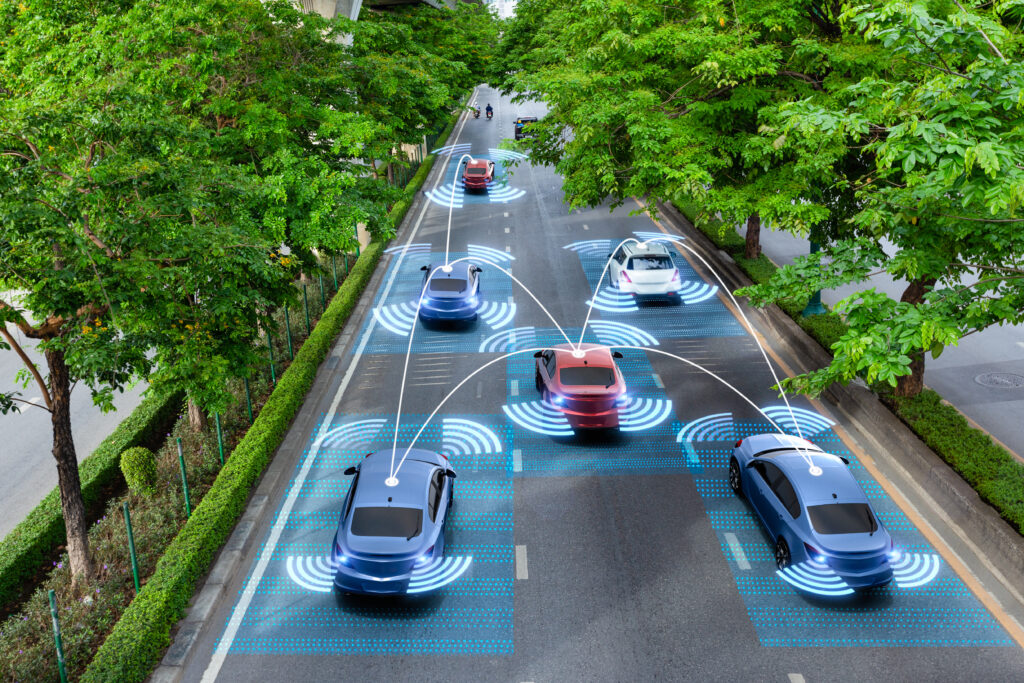
In the rapidly evolving landscape of the automotive industry, the integration of technology has brought about revolutionary changes. One such transformative development is the advent of connected cars. These vehicles, equipped with advanced communication and computingcapabilities, are reshaping the way we drive, interact with our vehicles, and even think about transportation as a whole.
Understanding Connected Cars - A Technological Revolution
Connected cars mark a transformative leap in the evolution of the automotive industry, driven by the integration of cutting-edge technologies. At their core, these vehicles transcend their traditional role as mere modes of transportation. Instead, they emerge as intelligent, data-driven entities, fundamentally altering our perception of what a car can be.
The Technological Backbone - Internet Of Things (IoT)
The foundational element of connected cars is the integration of the Internet of Things (IoT). This revolutionary concept entails connecting devices to the internet, allowing them to communicate and share data seamlessly. In the context of automobiles, IoT transforms conventional vehicles into dynamic hubs of connectivity.
Beyond Transportation - Intelligent, Data-Driven Entities
Connected cars cease to be conventional transportation vessels; they evolve into sophisticated entities capable of offering an array of services. By harnessing the power of IoT, these vehicles can interact not only with their immediate environment but also with a broader ecosystem, encompassing other vehicles and urban infrastructure.
Real-Time Communication - Beyond Conventional Boundaries
The prowess of connected cars lies in their ability to establish real-time communication channels. This communication extends beyond the confines of the vehicle, enabling interaction with the external world, other vehicles on the road, and even with urban infrastructure. This seamless connectivity forms the bedrock of the myriad services these vehicles can offer.
Intelligent Decision-Making - Data-Driven Insights
Connected cars leverage the vast amount of data generated from various sensors and communication nodes. This data-driven approach empowers these vehicles to make intelligent decisions, enhancing not only the driving experience but also the overall efficiency and safety of the transportation ecosystem.
Myriad Of Services - Beyond Conventional Expectations
The transformation of cars into intelligent entities opens up a realm of possibilities for services. From advanced navigation and traffic management to in-car entertainment and personalized user experiences, connected cars redefine the scope of what we can expect from our vehicles.
Safety Redefined - Proactive Hazard Avoidance
Safety takes center stage in the realm of connected cars. Through the amalgamation of IoT, sensors, and real-time communication, these vehicles can proactively identify potential hazards, deploy collision avoidance systems, and issue warnings for lane departure. This not only enhances individual safety but contributes to a collective improvement in road safety.
Sustainability Integration - Driving Green Initiatives
Connected cars are not only intelligent and safe but can also play a pivotal role in fostering sustainable practices. By optimizing traffic flow, reducing congestion, and contributing to overall efficient transportation, they align with broader green initiatives aimed at creating more environmentally friendly urban spaces.
Exploring The Diverse Applications Of Connected Cars
Connected cars, with their fusion of technology and mobility, present a myriad of applications that transcend the traditional boundaries of vehicular function. These applications can be broadly categorized into two main types: single-vehicle and cooperative.
Single-Vehicle Applications - Enhancing The Individual Driving Experience
Single-vehicle applications revolve around technologies embedded within individual cars, augmenting the driving experience on a personal level. These applications encompass functionalities ranging from driver assistance to entertainment, creating a more seamless and enjoyable journey.
Driver Assistance
Connected cars offer an array of driver assistance features, such as lane departure warnings, adaptive cruise control, and automatic emergency braking. These features leverage sensors and real-time data to enhance safety, assisting drivers in navigating the roads with confidence.
Infotainment
Entertainment takes center stage with in-car infotainment systems. Streaming music, movies, and other content transforms the driving experience into a more enjoyable and personalized journey. Connected cars become not just a means of transportation but a hub of entertainment on wheels.
Cooperative Applications - Revolutionizing Interaction Beyond The Vehicle
Cooperative applications extend the connectivity of cars beyond their individual confines, fostering communication with external elements like road infrastructure and other vehicles. This collaborative approach aims to improve safety, traffic flow, and overall road efficiency.
Commerce Integration
Connected cars act as platforms for e-commerce transactions, facilitating in-car purchases and payments. From fuel and toll payments to ordering food and groceries, these transactions seamlessly integrate into the driving experience, adding a layer of convenience.
Mobility Management
Real-time information about traffic conditions and alternative routes empowers drivers with enhanced mobility management. By avoiding congestion and making informed decisions, connected cars contribute to a smoother and more efficient driving experience.
Vehicle Management
Connected systems go beyond the road, offering remote diagnostics and maintenance alerts. This proactive approach enables drivers to stay ahead of vehicle maintenance, preventing breakdowns, and ensuring reliable and efficient performance.
Safety Enhancement
Real-time warnings about potential hazards, including pedestrians, other vehicles, and adverse weather conditions, form a crucial aspect of connected car technology. This safety-centric application contributes to accident prevention and overall road safety.
Breakdown Prevention
Connected cars act as guardians against breakdowns by providing early warnings of potential issues, such as low batteries or engine trouble. This preventative approach ensures a smoother and more reliable driving experience.
Wellbeing Features
Some connected cars incorporate well-being features, such as air quality sensors and wellness monitoring. These features prioritize the healthand comfort of drivers, creating a holistic driving experience.
Decoding Connectivity - 5 Ways Connected Cars Communicate
The transformative power of connected cars lies in their ability to communicate seamlessly, creating an intricate web of data exchange that enhances safety, efficiency, and the overall driving experience. Here are five key ways in which connected cars communicate:
Vehicle-to-Vehicle (V2V) - Building A Network Of Awareness
Connected cars leverage V2Vcommunication to establish a network of awareness among vehicles on the road. This technology facilitates the exchange of critical information, such as vehicle speed, position, and direction, between two or more vehicles. By enabling cars to communicate with each other, V2V plays a pivotal role in enhancing road safety, allowing vehicles to proactively avoid collisions and navigate the road with greater precision.
Vehicle-to-Infrastructure (V2I) - Bridging Cars And Urban Infrastructure
V2I communication extends the connectivity of cars beyond their metal confines to the broader urban landscape. This technology enables vehicles to communicate with traffic infrastructure, including traffic lights, road signs, and parking meters. By providing real-time information about traffic conditions, roadwork, and other events, V2I empowers drivers to make informed decisions about their route and driving behavior, contributing to a more efficient and seamless transportation ecosystem.
Vehicle-to-Pedestrian (V2P) - Fostering Interaction With Road Users
V2P communication establishes a channel for vehicles to interact with pedestrians and cyclists, creating a shared awareness of the road environment. This technology allows vehicles to provide warnings to pedestrians about approaching vehicles and vice versa. By fostering communication between vehicles and vulnerable road users, V2P contributes to accident prevention, ultimately improving road safety.
Vehicle-to-Cloud (V2C) - Accessing The Power Of Cloud-Based Services
Connected cars tap into the vast resources of the cloud through V2C communication. This technology enables vehicles to communicate with cloud-based services, accessing real-time traffic updates, weather information, and other data. By providing drivers with valuable insights, V2C enhances their ability to plan routes, anticipate road conditions, and overall improve the driving experience.
Vehicle-to-Everything (V2X) - The Comprehensive Communication Ecosystem
V2X communication represents the amalgamation of V2V, V2I, V2P, and V2C, creating a comprehensive ecosystem of connectivity. This technology enables vehicles to communicate not only with each other and the surrounding infrastructure but also with pedestrians and cloud-based services. By offering a holistic view of the road environment, V2X empowers vehicles to make informed decisions about their driving behavior, contributing to a safer, more efficient road network.
Unlocking The Consumer Advantages Of Connected Cars
Connected cars go beyond being mere modes of transportation; they evolve into comprehensive lifestyle companions, offering a plethora of benefits to the discerning consumer. Here's a closer look at the myriad ways in which connected cars enhance the driving experience:
Infotainment Galore - Entertainment At Your Fingertips
Connected cars transform the driving experience into a journey of entertainment. With access to a diverse range of infotainment services, drivers and passengers can enjoy music, movies, podcasts, and more on the go. The car becomes a moving entertainment hub, making even the longest journeys enjoyable and engaging.
Next-Level Navigation - Guided By Third-Party Apps
Say goodbye to the days of cumbersome navigation. Connected cars offer an advanced navigation system powered by third-party apps. Real-time updates, alternative routes, and traffic information ensure that you reach your destination efficiently. The driving experience becomes not just about getting from point A to B but enjoying the journey with informed navigation.
Safety First - Reducing Accident Risks
Connected cars prioritize safety with advanced features designed to reduce the chances of accidents. From collision detection and automatic emergency braking to lane departure warnings, these technologies create a safer driving environment. As a result, drivers and passengers can navigate the roads with increased confidence, knowing that their vehicle is equipped with state-of-the-art safety measures.
Financial Perks - Lower Insurance Premiums
Safety enhancements in connected cars don't just protect lives; they can also protect your wallet. With reduced accident risks, insurance companies often offer lower premiums. The No Claim Bonus (NCB) policy, triggered by fewer claims, translates to decreased insurance costs for the conscientious connected car owner, creating a tangible financial benefit.
Enhanced Security - Keeping Your Vehicle Safe
Connected cars come equipped with enhanced security features that extend beyond the road. These features enable owners to keep track of their vehicles even when not in operation. Whether checking the vehicle's location remotely or receiving alerts for suspicious activities, connected cars offer a heightened sense of security, providing peace of mind to owners.
Remote Control - A New Dimension Of Accessibility
The connectivity of modern cars extends to remote access, allowing owners to control various functions even when not physically present in the vehicle. From locking and unlocking doors to starting the engine or adjusting climate settings, this remote accessibility adds a layer of convenience, making it easier to manage the vehicle's functions from a distance.
Navigating Concerns In Connected Car Technology
As we embrace the era of connected cars and their myriad benefits, it's crucial to acknowledge and address the concerns that arise in tandem with this technological evolution. Two primary concerns stand out: vehicle theft and the potential vulnerability to phone hacking.
Vehicle Theft - The Achilles Heel Of Connectivity
The connectivity that defines modern vehicles opens a door to potential threats, none more alarming than the specter of vehicle theft. A notable study in Belgium demonstrated that hackers could exploit vulnerabilities to steal a Tesla Model X in a matter of minutes. While this revelation sparks concern, the inherent advantage of connected cars lies in their ability to receive over-the-air updates promptly.
In the case of Tesla, a swift software update served as an instant remedy, preventing the potential theft. This capability highlights one of the key advantages of connected cars—swift responsiveness to emerging threats, safeguarding vehicles through dynamic software adjustments. The seamless, behind-the-scenes nature of these updates ensures that drivers remain protected without even being aware of the potential risks they narrowly avoided.
Phone Hacking - Tapping Into The Mobile Gateway
The integration of smartphoneswith connected car technology creates a potential gateway for unauthorized access, raising concerns about the security of personal information and control over the vehicle. A pre-installed app on a driver's smartphone might inadvertently collect the vehicle's information, including its location, making it susceptible to exploitation by scammers and thieves.
Recognizing the severity of this threat, additional security measures have been implemented. Two-factor authentication and fingerprint unlocking now act as robust barriers, requiring stringent verification before users can exert control over their vehicles via their smartphones. Crucially, critical functions that could compromise the vehicle's safety or operation remain insulated from direct control through a user's device.
In addressing these concerns, the automotive industry underscores its commitment to evolving not just the convenience and connectivity of vehicles but also their security. The proactive integration of security features and the capacity for swift, remote updates demonstrate a commitment to staying one step ahead of potential threats.
Charting The Future - The Evolution Of Connected Cars
As we stand on the cusp of a technological revolution, the trajectory of connected cars unveils a landscape of innovation, collaboration, and transformative possibilities. What lies ahead in this space is not merely an extension of current capabilities but a paradigm shift that promises to reshape the automotive industry and redefine our relationship with transportation.
Collaborative Synergy - Carmakers, Governments, And Tech Leaders Unite
The future of connected cars is one of collaboration, with key stakeholders converging to unlock the true potential of this transformative technology. Carmakers, government law departments, and suppliers are pooling their resources, knowledge, and expertise to delve deeper into the capabilities of connected cars. With significant investments from techgiants like Microsoft, automotive manufacturers like GM, and chip suppliers like Qualcomm, the collaborative synergy in this space is poised to fuel unprecedented growth in the coming years.
Smart Integration - From Smartphones To Bespoke Automotive Applications
The infusion of smartphone technology into the automotive industry has been an ongoing trend, but what's next is a shift toward bespoke automotive applications. Chip suppliers are honing their focus on creating tailored solutions that harness data, analytics, and seamless communication with charging infrastructure. This smart integration goes beyond entertainment and navigation, extending to functionalities like parking assistance and data-driven insights. As a result, new businesses are emerging, capitalizing on the wealth of data collected by connected cars and the burgeoning concept of vehicle-to-everything (V2X).
Autonomous Aspirations - Connected Cars In The Autonomous World
Connected cars are not merely a standalone innovation; they represent a significant stride toward the realization of autonomous vehicles. Real-time sensing and data collection capabilities enable vehicles to communicate with each other seamlessly, creating an environment where crashes are minimized, pedestrians are safeguarded, and traffic flows freely. This interconnected network of vehicles has the potential to revolutionize urban mobility, ushering in an era of safer roads, enhanced efficiency, and a transformative impact on the world as we know it.
Connected Cars - FAQs
What Are Examples Of Connected Cars?
- Tesla Model 3:The Tesla Model 3 serves as an exemplary illustration of a connected car. With its capacity for over-the-air software updates, autonomous driving capabilities, and a plethora of entertainment options available via the car's touchscreen interface, it epitomizes the cutting-edge advancements in automotive connectivity. For a closer look at the Tesla Model 3's towing capacity, explore this insightful article on GadgetsGaadi.
- Audi A8:Audi's A8 sedan is equipped with advanced connectivity features, including a sophisticated infotainment system, navigation with real-time traffic updates, and the ability to connect seamlessly with smartphones.
- BMW 7 Series:The BMW 7 Series incorporates connected car features, allowing for smartphone integration, advanced navigation systems, and in-car Wi-Fi. It also features gesture controls and a comprehensive driver assistance package.
- Chevrolet Bolt EV:Chevrolet's Bolt EV is an electric vehicle that boasts connected features such as remote vehicle monitoring, over-the-air updates, and compatibility with mobile apps that allow users to check battery status and plan charging remotely.
- Ford Mustang Mach-E:Ford's electric SUV, the Mustang Mach-E, showcases connected car technology with features like a large infotainment touchscreen, over-the-air updates, and a FordPass app for remote vehicle monitoring and control.
What Is A Connected Car Device?
A connected car device is a piece of hardwareor a gadget that can be added to a vehicle to enable connectivity features. These devices often provide access to various smart functions and may include features such as real-time tracking, diagnostic information, and connectivity to other smart devices. Examples include OBD-II (On-Board Diagnostics) Devices, telematics devices, and smart dashcams.
What Is Connected Vehicle System?
A connected vehicle system refers to the infrastructure and technologies that enable vehicles to communicate with each other, with roadside infrastructure, and with central systems. This system facilitates the exchange of information for various purposes, including improving safety, traffic flow, and overall driving experience. Key components of a connected vehicle system include vehicle-to-vehicle(V2V) communication, vehicle-to-infrastructure (V2I) communication, and vehicle-to-everything (V2X) communication. Connected vehicle systems play a crucial role in the development of smart and autonomous transportation solutions, contributing to a safer, more efficient, and interconnected future on the roads.
Conclusion
Connected cars are not merely a technological innovation; they represent a paradigm shift in the way we perceive and interact with transportation. As connectivity continues to advance, the automotive industry is poised for a future where cars are not just vessels for movement but dynamic hubs of information, safety, and convenience. Embracing this evolution opens the door to a new era of mobility—one that is interconnected, intelligent, and responsive to the evolving needs of the modern world.
Jump to
Understanding Connected Cars - A Technological Revolution
Exploring The Diverse Applications Of Connected Cars
Decoding Connectivity - 5 Ways Connected Cars Communicate
Unlocking The Consumer Advantages Of Connected Cars
Navigating Concerns In Connected Car Technology
Charting The Future - The Evolution Of Connected Cars
Connected Cars - FAQs
Conclusion

Daniel Barrett
Author
Daniel Barrett is a tech writer focusing on IoT, gadgets, software, and cryptocurrencies. With a keen interest in emerging technologies, Daniel offers expert analysis and commentary on industry trends. Follow him for authoritative insights into the latest tech innovations.
Latest Articles
Popular Articles
